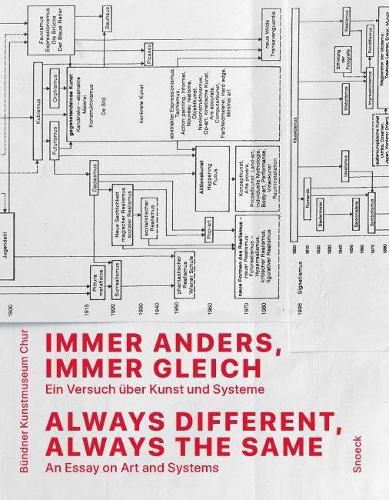Readings Newsletter
Become a Readings Member to make your shopping experience even easier.
Sign in or sign up for free!
You’re not far away from qualifying for FREE standard shipping within Australia
You’ve qualified for FREE standard shipping within Australia
The cart is loading…






During the 1960s, the art world’s interest in systems grew quite exponentially, running parallel to the social upheavals and the fundamentally critical view of the system held by thinkers of the era. Rather more consequential, from today’s point of view, were the technological advances: the development of cybernetics, communication networks, and -computer systems that turned the exchange of information into an important social and economic factor. This exhibition and this publication con-sider art of the 1960s and early 1970s with regard to systems thinking, conceiving it as communication and critique of the system. The works formally used the principles of systems thinking to debate content; the viewers had to take up position both spatially and intellectually and thus turned into significant parts of the works. Fifty years later, systems thinking is more critical than ever. This exhibition and publication show -representative works of the 1960s and 1970s in combination with contemporary art that examines important issues regarding the nature of data processing, infor-mation distortion, and system compatibility. Digital systems and software are as much tools for these contemporary artists as the principles of systemized thinking. They frequently address just this dependency on systems and codes and thus make their mode of operation -visible. The book and the exhibition Always -Different, Always the Same form an open art-historical reference system and provide a variety of cross-references between the different artworks and decades.
$9.00 standard shipping within Australia
FREE standard shipping within Australia for orders over $100.00
Express & International shipping calculated at checkout
During the 1960s, the art world’s interest in systems grew quite exponentially, running parallel to the social upheavals and the fundamentally critical view of the system held by thinkers of the era. Rather more consequential, from today’s point of view, were the technological advances: the development of cybernetics, communication networks, and -computer systems that turned the exchange of information into an important social and economic factor. This exhibition and this publication con-sider art of the 1960s and early 1970s with regard to systems thinking, conceiving it as communication and critique of the system. The works formally used the principles of systems thinking to debate content; the viewers had to take up position both spatially and intellectually and thus turned into significant parts of the works. Fifty years later, systems thinking is more critical than ever. This exhibition and publication show -representative works of the 1960s and 1970s in combination with contemporary art that examines important issues regarding the nature of data processing, infor-mation distortion, and system compatibility. Digital systems and software are as much tools for these contemporary artists as the principles of systemized thinking. They frequently address just this dependency on systems and codes and thus make their mode of operation -visible. The book and the exhibition Always -Different, Always the Same form an open art-historical reference system and provide a variety of cross-references between the different artworks and decades.